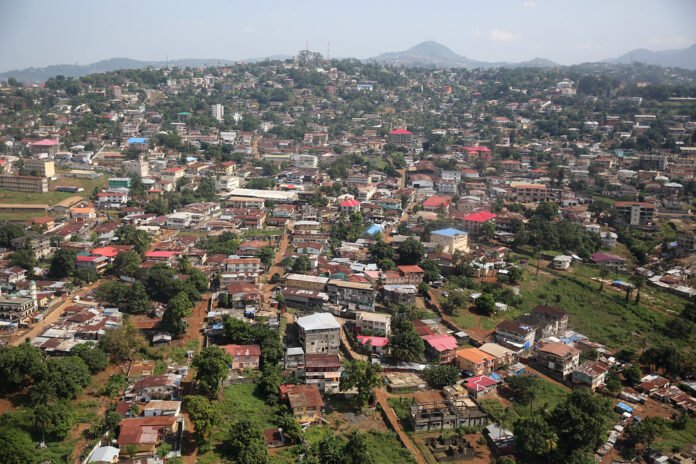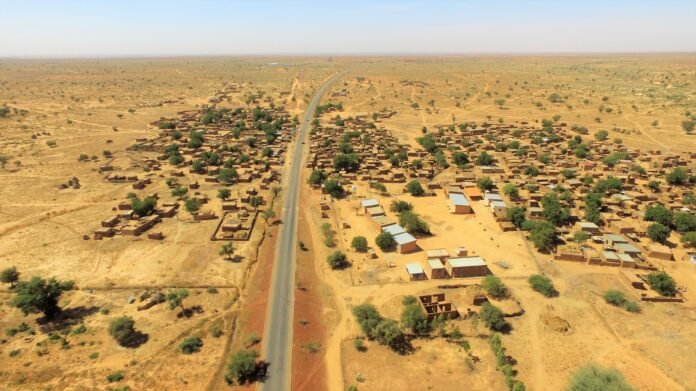Namibia’s healthcare system operates under a two-tier structure comprising public and private health insurance schemes. Each plays a distinct role in health service delivery, and while they share some overarching goals—like promoting accessibility and improving health outcomes—they differ markedly in coverage, cost, and accessibility.
Public Health Insurance in Namibia is primarily tax-funded and serves the majority of the population—about 80% to 85%—especially in rural and low-income communities. The public system is built on a three-tier structure of national, regional, and district services. Facilities are often overcrowded and under-resourced, but they offer low-cost or free access to essential medical services. Key public schemes include the Public Service Employee Medical Aid Scheme (PSEMAS), which covers government workers and their dependents, and the Special Fund for State Patients, which finances treatment for patients needing care unavailable in Namibia. Future efforts include the National Medical Benefits Fund (NMBF) under the Social Security Commission, which aims to extend formal health insurance to informal sector workers.
In contrast, private health insurance covers a much smaller segment—around 12% to 20% of Namibia’s population—mainly urban, wealthier, and formally employed individuals. These are funded through monthly or annual premiums, adjusted based on risk factors like age and number of dependents. The private system offers faster access, shorter wait times, and generally higher quality services through Namibia’s 800+ private health facilities. Private schemes are regulated under the Medical Aid Funds Act of 1995 and supervised by NAMFISA (Namibia Financial Institutions Supervisory Authority).
A major difference lies in the cost and accessibility of care. Public health services are often free or heavily subsidized, making them more accessible to the general population but limited in quality and scope due to funding constraints. Meanwhile, private health insurance provides more comprehensive and efficient services but is often unaffordable for many, given the rising cost of premiums and private care.
Another key distinction is in their administrative structure and sustainability. Public schemes like PSEMAS face systemic issues such as fraud, ghost beneficiaries, and delayed reimbursements, raising concerns about long-term financial viability. On the other hand, private medical aid schemes are more efficiently managed but are criticized for their exclusivity and lack of affordability.
Despite these differences, both sectors are essential to the national health framework and share common goals—notably the move toward Universal Health Coverage (UHC). The government’s recent UHC policy aims to bridge gaps between these sectors by expanding formal coverage through instruments like the NMBF and improving coordination across fragmented public services.
Top Public Health Insurance Options in Namibia
Namibia’s public healthcare system is primarily funded by the government and provides services through the Ministry of Health and Social Services (MoHSS). The country does not operate multiple public health insurance providers like some larger countries; rather, it relies on a centralized public system that offers universal access to a wide range of health services. Below is an overview of Namibia’s public health coverage, its features, and performance.
1. Ministry of Health and Social Services (MoHSS) – Public Health Coverage(Official website: https://mfpe.gov.na/medical-aid)
Namibia’s main public healthcare mechanism is not a standalone insurance fund but a government-funded healthcare model that offers subsidized or free services through public health facilities across the country.
- Cost:
Public healthcare in Namibia is heavily subsidized by the state. Basic consultations and treatment at clinics and state hospitals are either free or involve minimal co-payments, typically less than NAD 100 (approx. USD 5). Children, the elderly, pregnant women, and low-income individuals often receive free services. - Available Services / Coverage Features:
The public health system offers a broad range of services including:
- Primary healthcare (immunizations, maternal care, HIV/AIDS services)
- Outpatient and inpatient care
- Emergency medical services
- Tuberculosis and malaria treatment
- Chronic disease management
- Access to antiretroviral therapy (ART)
- Basic surgical services
- Primary healthcare (immunizations, maternal care, HIV/AIDS services)
- The public sector also supports mobile health outreach for remote areas.
- Open for All or Limited:
The MoHSS system is open to all legal residents, including citizens, permanent residents, and in some cases asylum seekers. No formal enrollment is needed, and access is granted based on need rather than employment or contribution status. - Core Financial Features:
Funded through general taxation, the system allocates resources annually via the national budget. While not an insurance model in the strictest sense, it effectively acts as a national health coverage scheme. Patients are required to pay small fees for certain services and medications, but exemptions are common for vulnerable populations. - Consumer Satisfaction Score:
The public health system in Namibia has mixed satisfaction ratings, largely due to infrastructure and staffing shortages, especially in rural regions. A 2023 survey by the MoHSS and World Bank indicated a consumer satisfaction score of approximately 62%, with higher satisfaction in urban areas where services are more reliable. Common concerns include long waiting times, medicine stockouts, and understaffed facilities. However, patients appreciate the affordability and accessibility of essential services.
Top Private Health Insurance Providers in Namibia
Namibia’s private health insurance sector plays a crucial role in providing healthcare coverage to the urban and wealthier segments of the population. Private medical schemes offer access to private hospitals, clinics, and specialist care, often providing faster service and higher-quality facilities compared to the public sector. Below are the top private health insurance providers in Namibia, detailing their cost structures, coverage features, accessibility, financial aspects, and consumer satisfaction.
1. Medscheme Namibia(Official website: https://www.medscheme.com.na)
- Cost:
Premiums vary based on age, health status, and plan type, generally ranging from NAD 1,500 to NAD 5,000 per month (approx. USD 85 to 285). - Available Services / Coverage Features:
Comprehensive medical coverage including hospital stays, specialist consultations, chronic disease management, dental and optical care, maternity benefits, and emergency services. - Open for All or Limited:
Available to individuals, families, and corporate clients, with underwriting based on health screening. - Core Financial Features:
Risk-rated premiums with options for co-payments or deductibles. Offers savings accounts for medical expenses as part of some plans. - Consumer Satisfaction Score:
Approximately 78%, with praise for good customer service but some complaints about claim processing times.
2. NAMIBIA MEDICAL AID FUND (NAMAF)(Official website: https://namaf.org.na/)
- Cost:
Monthly premiums range from NAD 1,200 to NAD 4,000 (USD 70 to 230) depending on the selected plan and coverage level. - Available Services / Coverage Features:
Covers inpatient and outpatient care, specialist visits, prescription medication, maternity, and preventive care programs. - Open for All or Limited:
Open to all residents who meet eligibility criteria; corporate and individual memberships are available. - Core Financial Features:
Premiums are risk-adjusted; offers partial reimbursement and direct payment to providers. - Consumer Satisfaction Score:
Around 74%, with customers valuing comprehensive coverage but noting occasional administrative delays.
3. Fedhealth Namibia(Official website: https://www.fedhealth.co.za)
- Cost:
Premiums typically start at NAD 1,800 per month (about USD 100) and increase based on age and plan benefits. - Available Services / Coverage Features:
Hospital coverage, chronic disease management, day-to-day medical expenses, emergency evacuations, and wellness programs. - Open for All or Limited:
Open to individual and group clients; underwriting policies apply. - Core Financial Features:
Risk-based premiums, co-payments on specialist visits, and annual limits on certain services. - Consumer Satisfaction Score:
Approximately 80%, with strong ratings for responsiveness and claim settlement.
4. Standard Bank Medical Aid Scheme(Official website: https://bankmednamibia.com.na/)
- Cost:
Premiums vary widely, starting around NAD 2,000 per month (USD 115), depending on coverage. - Available Services / Coverage Features:
Comprehensive inpatient and outpatient services, chronic care, maternity, and specialist consultations. - Open for All or Limited:
Mainly offered to Standard Bank employees and affiliated corporate clients; limited individual plans available. - Core Financial Features:
Risk-rated premiums, with some employer contributions; co-payments apply for select services. - Consumer Satisfaction Score:
Estimated at 75%, noted for good employer support but less flexible individual plans.
5. Bank Windhoek Medical Aid Scheme(Official website: https://www.nammed.com.na/)
- Cost:
Premiums start at about NAD 1,700 per month (around USD 100), adjusted for family size and coverage. - Available Services / Coverage Features:
Covers hospitalization, outpatient treatment, chronic medication, maternity, and specialist care. - Open for All or Limited:
Primarily serves Bank Windhoek employees and affiliates, but some individual memberships possible. - Core Financial Features:
Employer-subsidized premiums, risk-based contributions, and defined co-payments. - Consumer Satisfaction Score:
Around 72%, with customers appreciating benefits but citing some issues with claim delays.
READ MORE: Private and public health insurance of Switzerland (Make informed choices)


